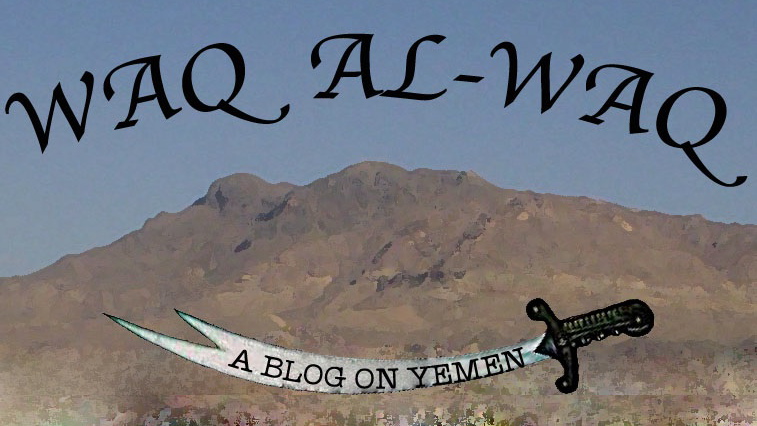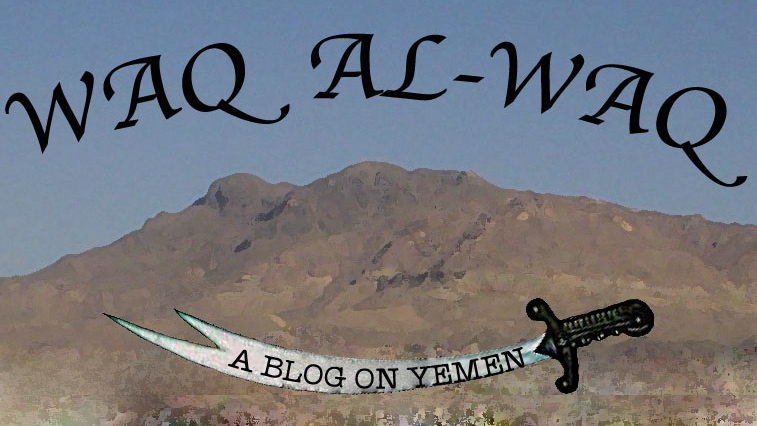Al-Qaeda Raids
I have been traveling to DC the last couple of days – and on the train most of the morning – which means I’m playing a bit of catch-up with all the news coming out of Yemen this morning, and while we don’t know all the details of the raids on suspected al-Qaeda hideouts today, a rough picture is starting to emerge.
It seems that Yemeni forces carried out at least three distinct raids, one in the southern governorate of Abyan, one in the Arhab area and at least one in San’a. These resulted in at least 34 al-Qaeda suspects dead and 17 others arrested, according to information that the government is putting out, although these numbers will likely change throughout the day.
The government is claiming that these cells were in the final stages of planning suicide attacks in Yemen and abroad – which likely means Saudi Arabia – and that among the targets were schools. We’ll have to wait and see how this checks out – the school allegation in particular seems like a piece of propaganda much like the Yemeni government’s claims back in 2008 that al-Qaeda was planning to attack the tomb of the Prophet Hud in Hadramawt.
Other sources – the most comprehensive article I have seen so far, is this one from al-Sahwa – claims that 53 people were killed in Abyan and many of them were women, children and old men – civillians, in other words. This is going to create a problem for the government with regards to retaliatory attacks in the future.
I think it would be helpful to take the three raids we know about in order.
First, is the one in Abyan. I am not convinced that this was a raid on al-Qaeda fighters – it may have been, but I’m reserving judgement until we have more information – this is not Marib, Shabwa or al-Jawf and not all Islamists in Yemen are al-Qaeda. This is also the region where the vast majority of the killings took place. Al-Sahwa, in the article I linked to above, claims that between 24-30 al-Qaeda fighters were killed there, while 53 people in all were killed.
The al-Sahwa report also mentions a number of names, but intriguingly it does not mention Muhammad Salih al-Kazimi, which was the name highlighted in the press release issued by the Yemeni Embassy in Washington. It does, however, mention two Muhammad Salih’s – one from the al-‘Awlaq tribe (this is the same tribe of Anwar al-‘Awlaki, who is reportedly in the region) and al-‘Amburi.
The next raid – the one in the Arhab region, just north of San’a – is the one that is going to cause problems for the Yemeni government. Again, according to the al-Sahwa report, one of the individuals who surrendered himself was Arif Mujali while his brother Hizam Mujali reportedly escaped the raid. The fact that the two brother were even involved in the raid is very bad news for the Yemeni government.
Both men were part of the February 2006 prison, although they subsequently turned themselves back in through the mediation efforts of Shaykh Hadi Dalqim of Marib. They were subsequently granted their freedom through this deal with the understanding that they would not return to al-Qaeda. That deal, it now seems, is no longer working.
I wrote about both men in this piece.
Here is a brief bio of Arif:
“Arif Salih Ali Mujali (b. 1984): Arif is the younger brother of Hizam Mujali, and is also known by the kunya Abu al-Layth al-San’ani. As his kunya indicates, he is from Sanaa. Another brother, Yahya, is also active in jihadi circles, and had agreed to marry his daughter to Fawaz al-Rabay’i. He was part of the 15-man cell and was charged with involvement in the November 2002 attack on the Hunt Oil helicopter, planning to attack five embassies, and for planning to assassinate then U.S. Ambassador Edmund Hull. He suffered from an injured leg, which he claimed was the result of torture, during his 2004 trial (Yemen Times, August 19-22, 2004). In the weeks following his escape from prison in February 2006, security forces managed to corner Arif and three companions in a building in the Musayk neighborhood of Sanaa, which has become known over the past few years as a haven for Islamic militants. The four men were able to escape, and eventually made their way to Marib. Sheikh Dalqim eventually persuaded both Arif and Hizam to surrender themselves to the government in August 2006 (al-Wasat, August 30, 2006). Arif is free as part of this arrangement.”
And Hizam:
“Hizam Salih Ali Mujali (b. 1980): Hizam is the older brother of Arif Mujali. He is from the governorate of Sanaa. Yemeni forces arrested him along with Fawaz al-Rabay’i in late 2003. The two resisted arrested, and fired at the security forces, killing one soldier, Hamid Khasruf. Hizam, like his younger brother, Arif, was part of the 15-man cell that went on trial in 2004. Hizam was charged with attacking a Hunt Oil helicopter and for participating in the attack on the Limburg. On August 30, 2004, he was sentenced to death for killing Khasruf. This sentence was upheld by a higher court in February 2005. Both Hizam and Arif turned themselves into the government in August 2006 (al-Wasat, August 30, 2006). Their surrender was orchestrated by Sheikh Hadi Dalqim, a tribal leader from Marib, who served as a mediator between the government and the brothers. It is unclear whether Mujali’s sentence was commuted as a result of the negotiations.“
The two also arranged for one of their nieces – a daughter of their brother, Yahya – to be married to Fawaz al-Rabi’i, an al-Qaeda commander who was killed by Yemeni forces in October 2006.
I have yet to find out whether there was indeed a third raid inside of San’a or if the one from Arhab is the one indicated – from most reports it seems as though there was a third raid, but the information to-date is sketchy.




